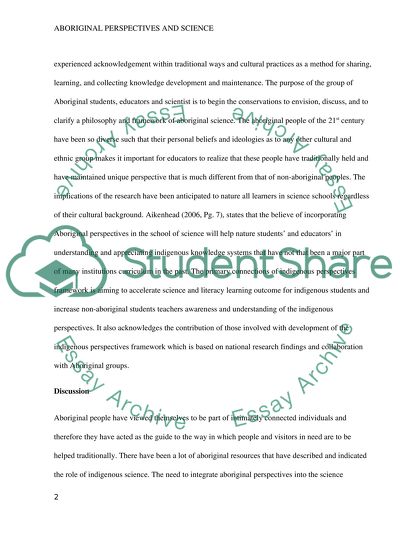Cite this document
(“Aboriginal perspectives and science Essay Example | Topics and Well Written Essays - 2250 words”, n.d.)
Retrieved from https://studentshare.org/education/1494038-aboriginal-perspectives-and-science
Retrieved from https://studentshare.org/education/1494038-aboriginal-perspectives-and-science
(Aboriginal Perspectives and Science Essay Example | Topics and Well Written Essays - 2250 Words)
https://studentshare.org/education/1494038-aboriginal-perspectives-and-science.
https://studentshare.org/education/1494038-aboriginal-perspectives-and-science.
“Aboriginal Perspectives and Science Essay Example | Topics and Well Written Essays - 2250 Words”, n.d. https://studentshare.org/education/1494038-aboriginal-perspectives-and-science.


